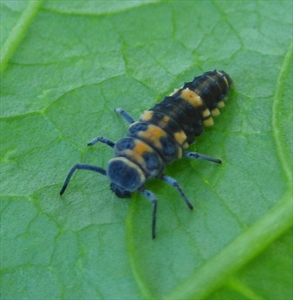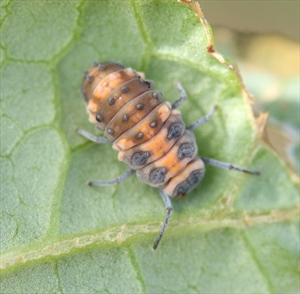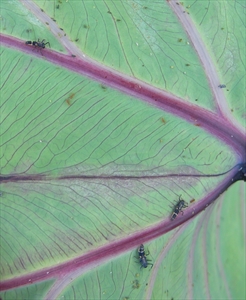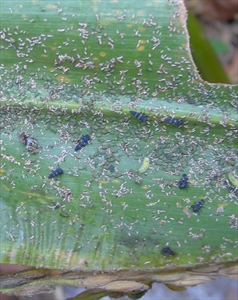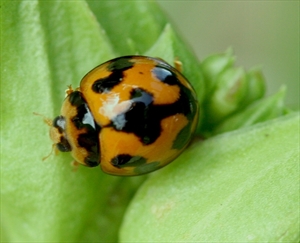- Worldwide distribution. Ladybird beetles of different kinds are present in all Pacific island countries. Ladybird beetles prey on mealybugs, scales, caterpillar eggs, and mites. Both larvae and adults feed on pests.
- Yellow-orange eggs in groups are often laid close to aphids.
- They differ from plant-feeding ladybird beetles which have: (i) adults - short soft hairs over upper body; (ii) larvae - long stiff spines over the body.
- Management: (i) move adults and larvae to colonies of pests; (ii) collect eggs and pupae (look like curled-up larvae), keep in e.g., jam jar and transfer; (iii) grow/encourage flowering plants, e.g., basil, marigolds, and weeds, for nectar and pollen; (iv) use soap, white or horticultural oils, or neem that breaks down quickly.
Pacific Pests, Pathogens and Weeds - Online edition
Pacific Pests, Pathogens, Weeds & Pesticides
Predatory ladybeetles (083)
Ladybeetles, ladybird beetles
Phrynocaria sp; there are many others.
AUTHORS Suzanne Neave & Grahame Jackson
Information from Hoffmann MP, Frodsham AC (1993) Lady Beetles. Natural enemies of vegetable insect pests. Cooperative Extension, Cornell University, Ithaca, NY. (https://biocontrol.entomology.cornell.edu/predators/ladybeetles.php); and Coccinellidae. Wikipedia. (https://en.wikipedia.org/wiki/Coccinellidae); and Bessin R (2019) Ladybugs. Cooperative Extension Service. University of Kentucky College of Agriculture, Food and Environment, Lexington, Kentucky. (https://entomology.ca.uky.edu/files/ef105.pdf); and from Ladybird beetles (undated). Business Queensland. Queensland Government. (https://www.business.qld.gov.au/industries/farms-fishing-forestry/agriculture/crop-growing/beneficials/ladybird-beetles). Photos 1,3&5 Suzanne Neave, CABI, UK.
Produced with support from the Australian Centre for International Agricultural Research under project PC/2010/090: Strengthening integrated crop management research in the Pacific Islands in support of sustainable intensification of high-value crop production, implemented by the University of Queensland and the Secretariat of the Pacific Community.
